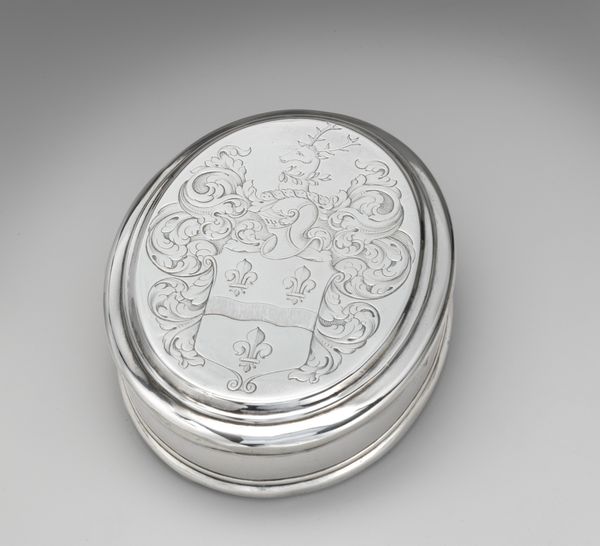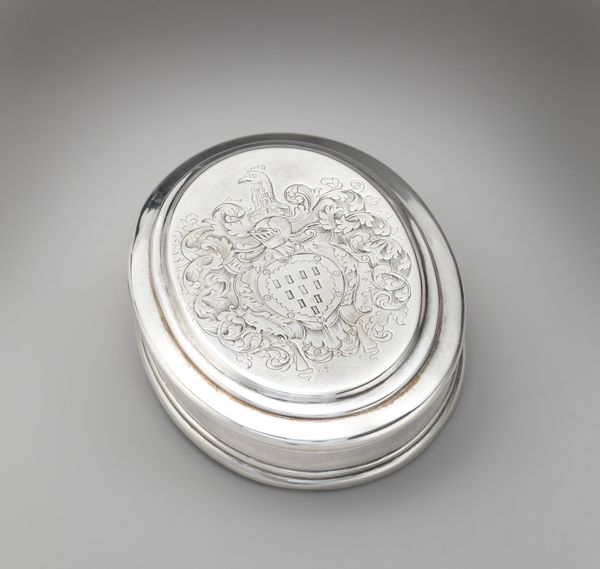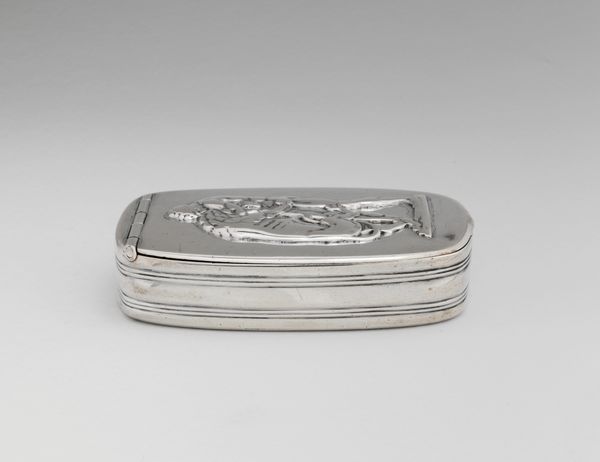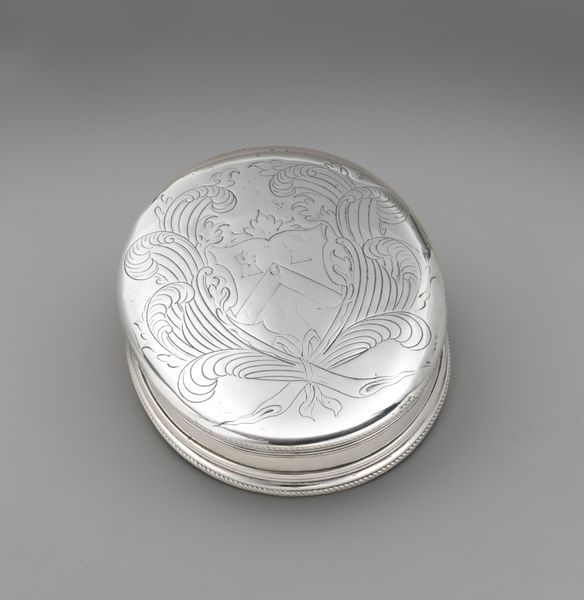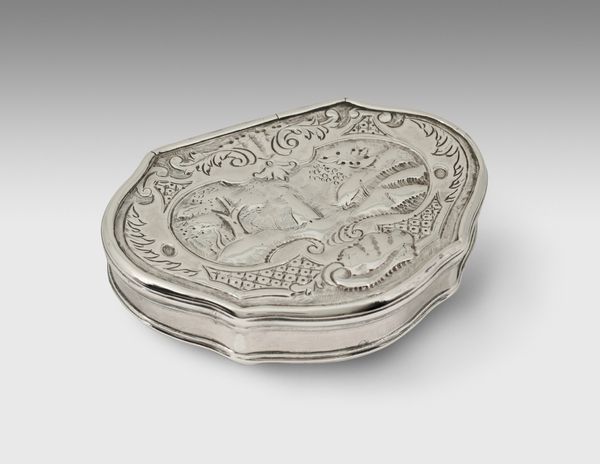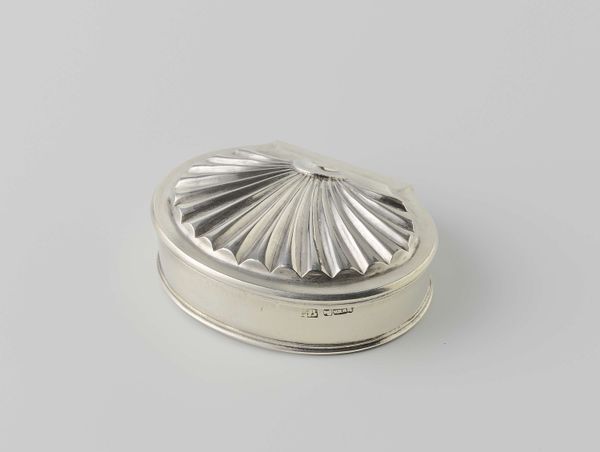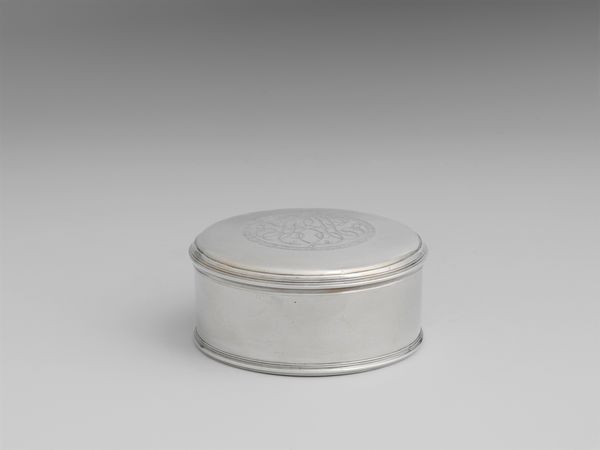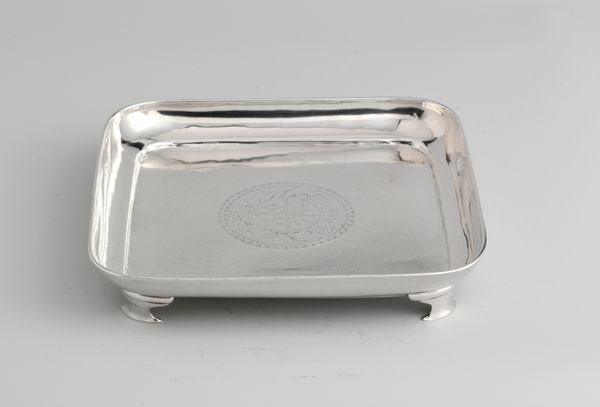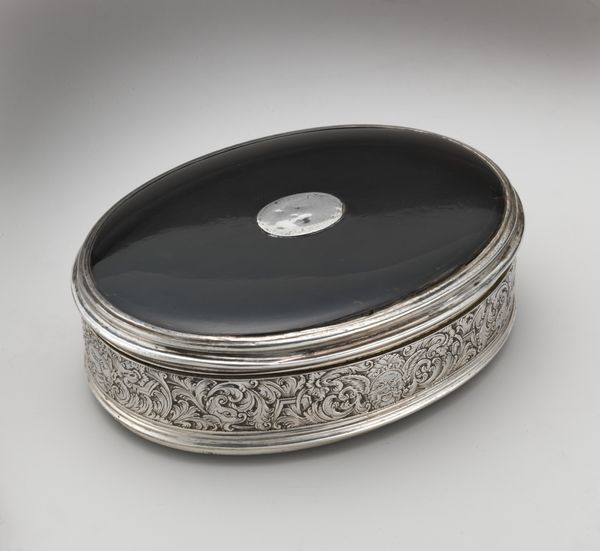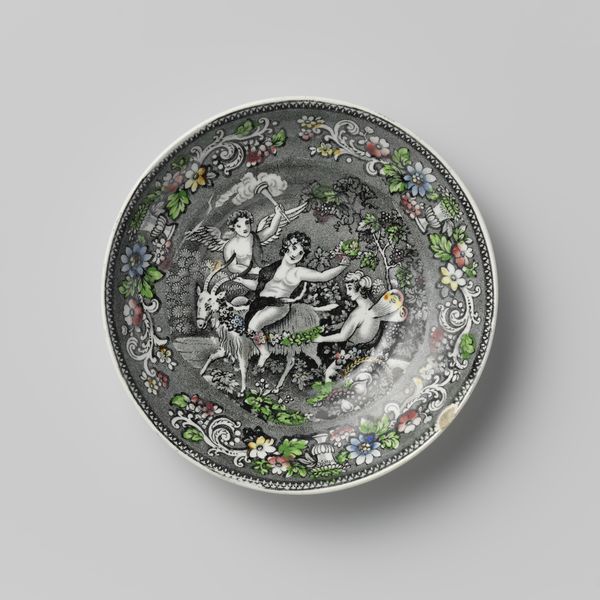
silver, metal, sculpture
#
silver
#
baroque
#
metal
#
sculpture
#
decorative-art
Dimensions: L. 3 1/2 in. (8.9 cm)
Copyright: Public Domain
Curator: Here we have an elegant silver tobacco box created by Edward Cornock sometime between 1709 and 1710. It's currently housed in the Metropolitan Museum of Art. What's your initial impression? Editor: Polished, certainly, and meticulously crafted. You can practically feel the coolness of the silver, despite only seeing an image. There is something almost austere about its restrained ornamentation, even as the lines remain baroque. Curator: Indeed, Cornock was a prominent silversmith working in London at the time. These boxes became increasingly popular as tobacco use spread amongst the upper classes. Their role became symbols of status. Editor: It makes you think about the economics, though, doesn't it? The raw material, the labour of extracting the silver, then its journey through artisans’ workshops into the hands of wealthy consumers. What kind of exploitation are we obscuring by appreciating these objects solely for their beauty? Curator: That’s a fair point. The production certainly depended on a complex web of commerce and labor, including potentially exploitative practices, but the appeal isn’t merely aesthetic. Owning something like this also reinforced social identity, setting the elite apart. The engraved coat of arms further personalized the piece and served as a symbol of lineage and power. Editor: Speaking of technique, observe how expertly the engraving’s lines and swirling tendrils are chased across the lid. This sort of design speaks to a desire for crafted luxury. Each careful choice, from metal type, ornament application to the consumer using it. I wonder what kinds of other processes are included. Curator: You're spot on, it does display amazing workmanship, and highlights how decorative art can also convey significant cultural narratives. Editor: Absolutely, that kind of craftsmanship warrants interrogation, considering the labour input. Curator: I agree. It reveals just how the value of this type of artifact moves beyond monetary terms, embedding social and cultural importance within its materiality. Editor: Yes, exactly. These considerations help ground our appreciation of such works in real-world socio-economic conditions.
Comments
No comments
Be the first to comment and join the conversation on the ultimate creative platform.
